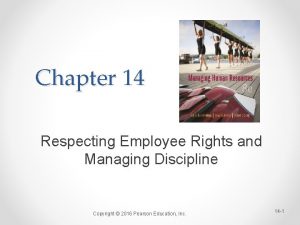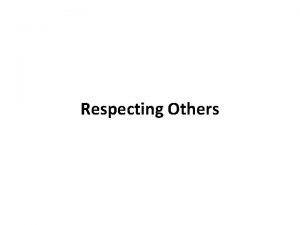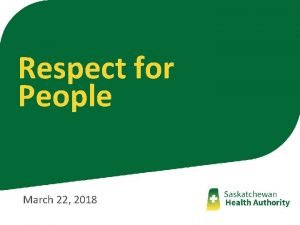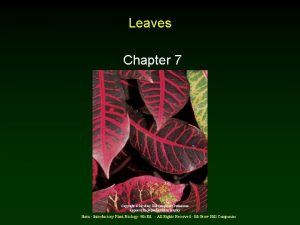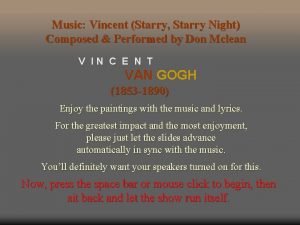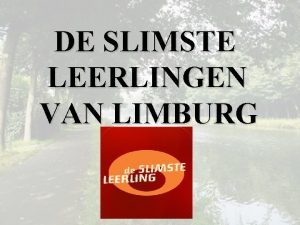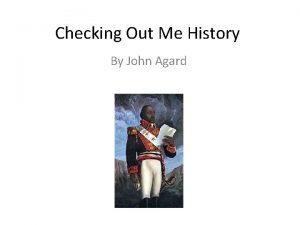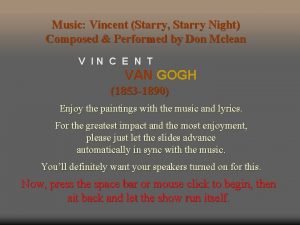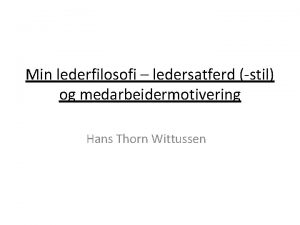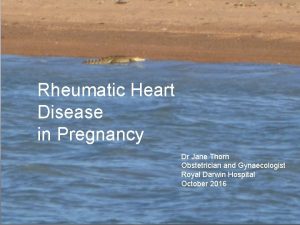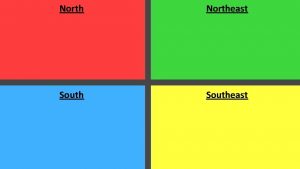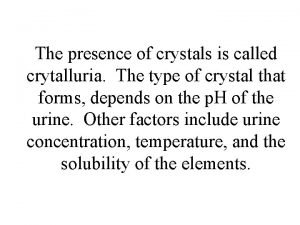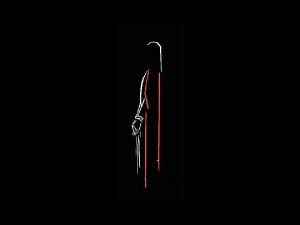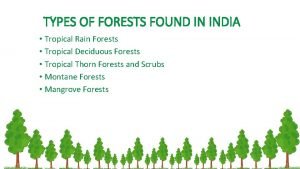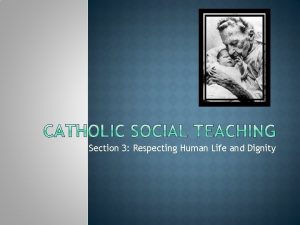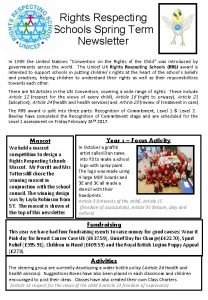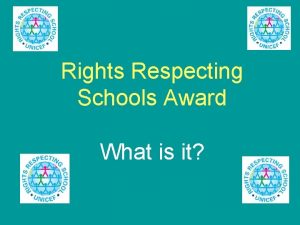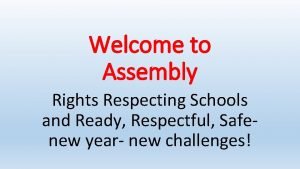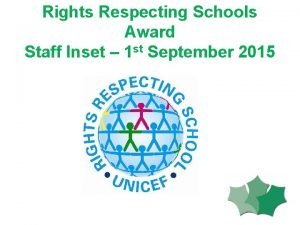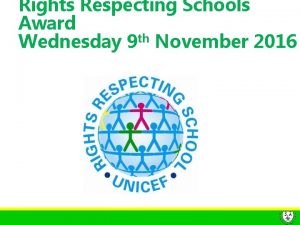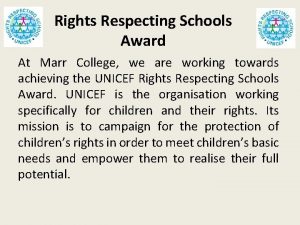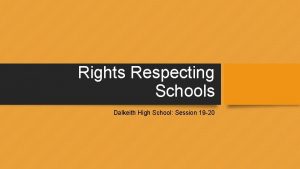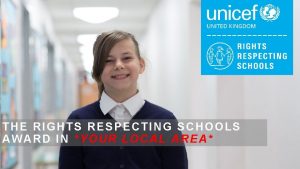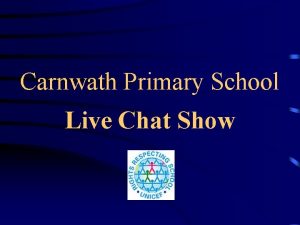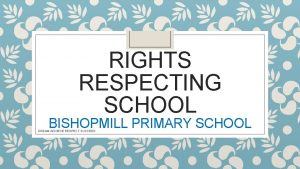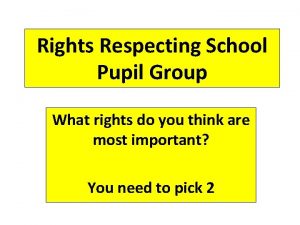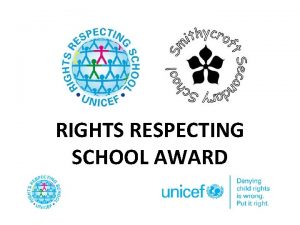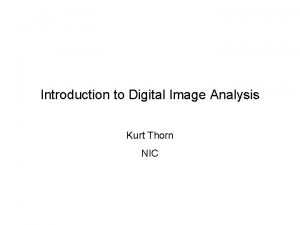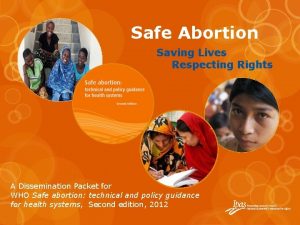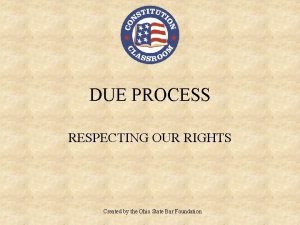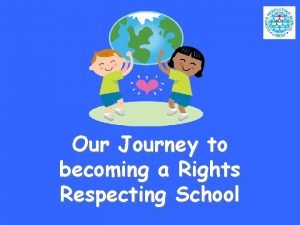The Rights Respecting Schools Introduction Thorn Primary May






















- Slides: 22

The Rights Respecting Schools Introduction Thorn Primary May 2016

The CRC as a guide to living The vision: A Rights Respecting School with the values of the Convention on the Rights of the Child (CRC) at its heart.

Our Aims

We value ourselves We value each other

We value our community We value our environment

What is a Rights Respecting School Like? It is where young people gain self-esteem by learning about the rights they have from birth and build from there • I learn about my rights • I feel included • My self-esteem rises • I can begin to think about others and their rights • I learn to negotiate • My language and thinking skills are extended

Learning about the CRC in P 1. Where children learn. . . . The difference between wants and needs That Needs =Rights That my rights are also your rights i. e. We now learn to have a responsibility



. . . it is where young people learn that rights bring responsibilities for adults and children If children have a right to be protected from conflict, cruelty, exploitation and neglect. . . . then they also have responsibility not to bully or harm each other


It’s a school where. . Everyone learns to use the language of rights, respect and responsibility. Adults and young people model rights respecting behaviour and language. We learn to put things in perspective and that we have an active role in making positive changes.

. . . where children become active global citizens • Universality of human rights • Identity • Challenge injustice and poverty in the world In Thorn Primary we teach the concepts of being a global citizen through our curriculum, e. g. • P 4 Water topic • Charity events • Application for 3 rd Eco Green Flag

. . and where children gain a powerful voice. At Thorn. . . . • Children are involved in their learning and setting their own targets • Children are asked about what they would like to learn • Children have opportunities to take on responsibilities • Children can share their ideas and worries with staff • Children are regularly asked their opinion and this instigates change

• • • By 10 years of age, most children in rights-respecting Primary Schools can. . . Give examples of how their own actions have consequencespositive and negative- for the rights of others globally Talk about the articles of the UN Convention on the Rights of the Child Give a range of examples of rights abuses from the immediate context of the school to the global context Use the CRC framework for making moral judgements across a range of issues including justice and sustainability Understand that their own rights are linked with a wide range of personal responsibilities Critically evaluate the actions of those with power, including governments, through reference to human rights

What is the award scheme and how does it work?

The UNICEF RRSA in a nutshell Schools demonstrate that the CRC is embedded in their ethos and curriculum so that a rights- respecting culture has been developed to a certain standard • UNICEF UK provides standards, validation statements and action plan • Recognition of commitment towards RRSA • Level 1 of the award before Level 2 • Assessed by self-evaluation and external assessment visit

Key elements on the journey to the RRSA • Audit • Action plan • Training and support • School community RRSA steering group • Pupil focus groups • Parental involvement • Self-evaluation • External assessment

Why does the RRSA work? 1. The CRC appeals to young people’s self-interest 2. They like its universality 3. They understand the relationship between rights and responsibilities 4. They like the fact that it derives from a ‘higher authority’ which is not school based 5. Young people can see that it provides them with a guide for living which they can take with them through their lives 6. The values and the articles are equally acceptable to all faiths 7. The articles and their values are acceptable to parents and adults when working with children 8. It gives coherence to school polices enhancing school leadership 9. Young people and adults working with them find the CRC empowering and helps to improve their relationships

• • There is growing evidence that becoming a RRS school contributes to: Improved pupil self-esteem Pupils' enhanced moral development Improved better relationships More positive attitudes towards diversity in society and the reduction of prejudice Pupils’ development as global citizens Enhanced job satisfaction for teachers Overall school improvement including better attendance, learning and academic standards

The idea in a nutshell Children and young people can: • Raise their achievement at school • Improve the quality of their own and their families’ lives IF they learn. . . • Exactly what their rights and responsibilities are according to the CRC and • How to use this understanding as a guide to living

Is this the missing link?
 Respecting employee rights and managing discipline
Respecting employee rights and managing discipline Objectives of respecting others
Objectives of respecting others Respect in the workplace activities
Respect in the workplace activities Chapter 6 lesson 2 respecting yourself and others
Chapter 6 lesson 2 respecting yourself and others Objectives of respecting others
Objectives of respecting others Spine vs thorn
Spine vs thorn Silver thorn of bloody rose
Silver thorn of bloody rose Tropical thorn forests and scrubs
Tropical thorn forests and scrubs Thorn slimste mens
Thorn slimste mens Toussaint de thorn
Toussaint de thorn Van gogh silent night
Van gogh silent night Hans thorn wittussen
Hans thorn wittussen Coniferous forest in pakistan
Coniferous forest in pakistan Jane thorn
Jane thorn Rose/thorn virtual icebreaker
Rose/thorn virtual icebreaker Crytalluria
Crytalluria Thorn the disciples angel
Thorn the disciples angel Which type of forests are found in india
Which type of forests are found in india Kurt thorn
Kurt thorn Huntsville city schools powerschool login
Huntsville city schools powerschool login Safety reach and target schools
Safety reach and target schools Negative rights vs positive rights
Negative rights vs positive rights Riparian and littoral rights
Riparian and littoral rights
